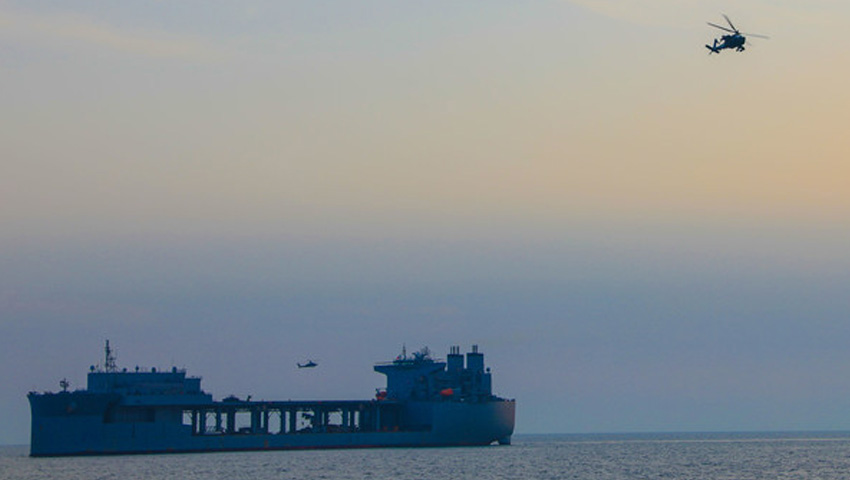The US Military has trialed the AH-64 Apache attack helicopter in the role of maritime anti-surface warfare in the Persian Gulf, marking an expansion in the mission profiles available to the platform.
To continue reading the rest of this article, please log in.
Create free account to get unlimited news articles and more!
US Navy expeditionary Landing Base ship USS Lewis B. Puller, assigned to US Naval Forces Central Command (USNAVCENT), has been conducting joint naval and air integration operations with US Army AH-64E Apache attack helicopters assigned to US Army Central Command’s (USARCENT) Task Force Saber, throughout the month of March.
The trials are designed to enhance the abilities of US forces to respond to multiple surface threats. The USS Puller has been acting as the landing base for the Apaches while enemy targets have been simulated by cyclone class patrol ships. The operations also involved the guided-missile destroyer USS Paul Hamilton.
“The integration of US Army air weapons teams with other joint fires into the maritime environment greatly enhances our ability to expand reconnaissance and attack capability,” said Captain Peter Mirisola, Commander, Destroyer Squadron 50/Commander, Combined Task Force (CTF) 55.
“The Apaches, in co-ordination with our surface ships, allow us to hold an adversary at high risk at extended ranges. Combined with other joint fires, these aircraft significantly increase the precision lethality of our joint maritime forces."
The Apache AH-64E is a twin-engine, four-bladed, multi-mission attack helicopter designed as a highly stable aerial weapons-delivery platform. It is capable of destroying an array of mobile armoured targets on land and sea using a 30mm automatic gun, aerial rockets and AGM-114 Hellfire missiles.
USNAVCENT surface forces also conducted joint naval and air integration operations with AC-130W Stinger II gunships, assigned to US Special Operations Command Central, 8 and 9 March.
“Working with USARCENT forces represents another key capability in our ongoing integration of naval and air assets across our joint and coalition force to ensure maritime superiority,” said Vice Admiral Jim Malloy, commander, USNAVCENT/US 5th Fleet.
“This kind of cross-domain integration allows us to maintain highly lethal and effective defensive capabilities, regardless of what platforms are operating in theatre.”
The US 5th Fleet area of operations encompasses about 2.5 million square miles of water area and includes the Arabian Gulf, Arabian Sea, Gulf of Oman, Red Sea and parts of the Indian Ocean. The expanse is comprised of 20 countries and includes three critical choke points at the Strait of Hormuz, the Suez Canal and the Bab el-Mandeb Strait at the southern tip of Yemen.

 Login
Login







